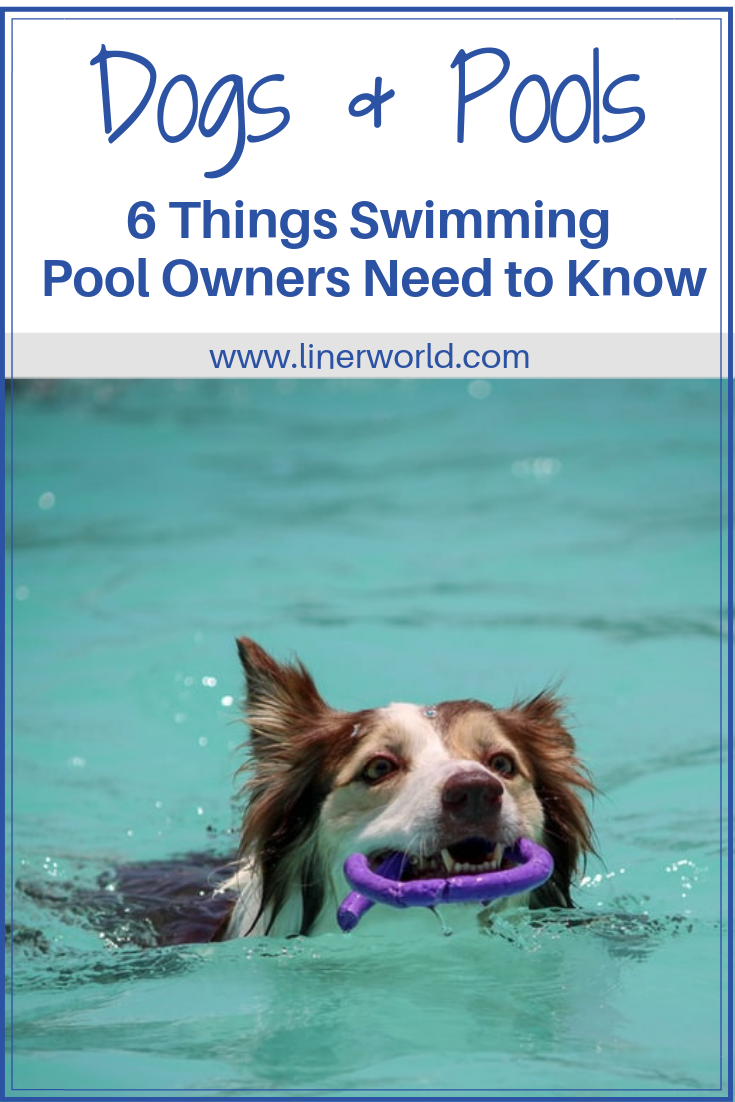
6 Things You Need To Know About Dogs & Swimming Pools
Hoping to have your dog join you in the pool but not sure if it’s a good idea? You’re not alone. Before letting Fido jump in the water with you, there are a few important safety and sanitation concerns to keep in mind. We want you and your family to make the most of the summer, but the last thing we want is something to happen to you, your pet, or your pool. With that in mind, here are a few things pool owners should know about dogs in swimming pools.
1. Not all dog breeds are great swimmers.
According to dog experts at Rover.com and the American Kennel Club, certain dogs love the water and, by design, are strong swimmers. However, some dogs aren’t necessarily suited for the pool.
Here are a few of the water-loving dogs who have been bred to be strong swimmers:
- American Water Spaniel
- Barbet
- Boykin Spaniel
- Chesapeake Bay Retriever
- Curly-Coated Retriever
- English Setter
- Labrador Retriever
- Newfoundland
- Standard Poodle
Here are a few that generally prefer to steer clear of the water or may have trouble swimming. Generally, you’ll see a lot of smaller dog breeds fall in this category.
- Chihuahua
- Yorkshire Terriers
- Pugs
- Shih Tzu
- Pekingese
- Boxers
- Maltese
- Pomeranian
- Bichon Frise
- Dachshund
There are, of course, exceptions to every rule and various flotation devices available to help your pet adjust to the water. Talk with your vet and trainer for specifics and whether or not your dog should be allowed in the pool.
2. A little chlorine is OK, but don’t let them drink too much.
Just like humans, most pets can handle ingesting minimal amounts of chlorine that’s diluted in the pool water. However, if your pet is drinking from your pool consistently and using it as a personal water dish, it might be time for some extra training to get them to use a separate bowl to prevent an upset stomach, vomiting, or other issues from pool chemicals.
A bigger concern is pets ingesting chlorine before it has been diluted in the pool water. All your pool chemicals should be kept safely out of reach of pets and children to avoid any problems. When using the chemicals, we recommend keeping a close eye on your pets or keeping them inside to prevent them from getting into the chemicals or water before the pool is safe/ready. If you have concerns your pet ingested too much chlorine, contact your vet.
3. You should wash your dog off before and after swimming
Pets, by nature, are dirtier than humans. Their fur holds dirt, fecal matter, and other debris that you should avoid having in your pool. In fact, some experts say that one dog is the equivalent of 10+ humans in your pool. If you are going to allow your pet to swim, rinsing your dog down with a hose or in the bathtub ahead of time can help keep your water more sanitary and prevent additional cleaning and maintenance.
After they’re done in the pool, give pets another wash to rinse off the chlorine and chemicals. Just like with humans, removing the chlorine prevents it from drying out hair and skin or causing irritation and rashes. Be sure you’re washing around sensitive areas as well, like eyes, nose, and ears. Many pet experts recommend using a conditioning pet shampoo after the pool too to help keep fur coats looking good.
4. Pets are still at risk of drowning.
Just like humans, pets are also at risk of drowning. You should always keep an eye on your pet and take precautions to avoid injury — or worse. A dog may not think twice about entering the pool without a human outside, especially if he or she is used to getting in the water and enjoys swimming. When not being supervised, dogs can easily get tangled up in pool covers, not be able to get back out of the pool, or end up in other dangerous situations.
To prevent drowning or injury, here are a few tips to keep your pet safe around the pool:
- Just like children, never let a pet swim unsupervised — even if your dog seems like a strong swimmer.
- Pick up all pool toys and accessories after swimming. Dogs may want to go in after them when you’re not looking.
- Remove easy access points such as pool stairs, ladders, pool slides, or diving boards when not in use or block them off.
- Consider gating your pool area or using a pool alarm.
- Use a doggy life jacket or flotation device if needed.
- Work on training around the pool, like sit and stay, so the dog knows not to enter without permission.
5. You need to keep the temperature in mind.
Just like humans, the water temperature can impact your dog. A good rule of thumb is that if the water is too cold or hot for you, it’s too cold or hot for the dog. It is particularly important to pay attention to the temperature during the beginning and end of the swimming season when temperatures vary more drastically.
As another note, patios, decks, sand, rocks and other surfaces around your pool area can get hot in the summer and hurt your pet’s paws. To protect paws in the heat, consider:
- Testing the area with your hand or feet before letting your pet walk on it
- Using a protective paw salve
- Investing in some pet booties
- Sticking to grassy areas around the pool
Be sure all pets have plenty of clean water to drink while they’re out in the sun and heat to prevent overheating.
6. Don’t worry too much about your liner.
From our experience, dogs don’t pose any additional risk to your vinyl pool liner. However, to be on the safe side, it may be best to make sure nails are trimmed before allowing them to swim, particularly for larger dogs whose feet may touch the bottom of the pool. If a pet is scratching at the sides of the pool, it may be a sign that the animal is not a fan of the water or needs help.
Need a new pool liner? Shop now.
Have fun with your four-legged friends this summer!
Your dog is part of the family, so it only makes sense that he or she should be able to enjoy family time around the pool. Of course, the above notes are only guidelines and every animal is different. Please talk with your vet and/or trainer regarding your dog and whether or not swimming in the pool is a good idea for them.
Got some great photos of you and your pets enjoying the water? Share them with us on Facebook!
Read Now:
How to Make Your Above Ground Swimming Pool Pet-Friendly
Tips for Animal-Proofing a Backyard Swimming Pool



